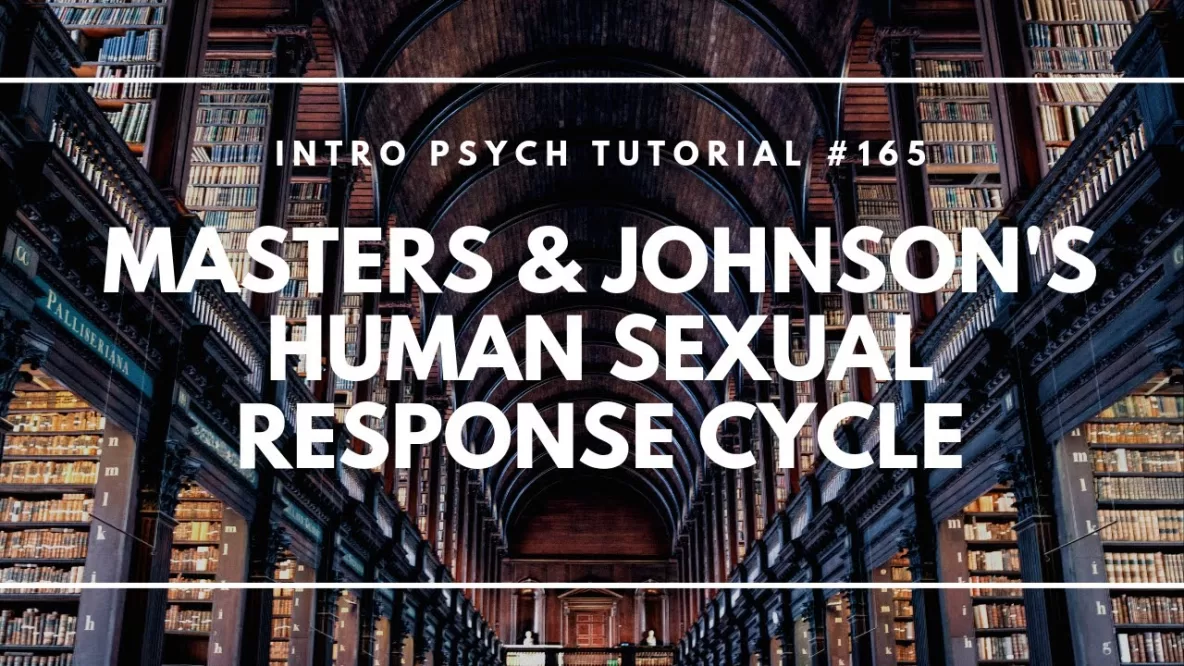In this video I briefly describe the work of William Masters and Virginia Johnson in identifying 4 distinct phases of the human sexual response cycle: excitement, plateau, orgasm, and resolution. Like these videos?
Don’t forget to subscribe to the channel to see future videos! Have questions or topics you’d like to see covered in a future video? Let me know by commenting or sending me an email!
Check out my full psychology guide: Master Introductory Psychology: http://amzn.to/2eTqm5s
Video Transcript
Hi, I’m Michael Corayer and this is Psych Exam Review. In the previous video I talked about sexual motivation and so in this video I’d like to look at sexual behavior in more detail. We’re going to do this by looking at the human sexual response cycle and this is something that was identified by William Masters and Virginia Johnson in their research in the 1960s and 70s.
So what Masters and Johnson did was they had rather uninhibited participants come into the lab and engage in sexual behavior, either sex with a partner or masturbation, and Masters and Johnson observed this and they also took physiological measurements. Based on their observation of reportedly over 10,000 orgasms in their laboratory, Masters and Johnson identified four distinct phases or stages of the human sexual response cycle. So let’s take a look at each of these four stages.
The first stage that we have is called the excitement stage and this is where sexual arousal first begins to occur. So we see an increase in heart rate, we see an increase in blood pressure, and we also see an increase in blood flow to the genitals and in males this causes erections and in females the vagina expands and begins to producing lubricants. Now, it’s worth noting that this process involves activity of the parasympathetic nervous system and this means that you have to be somewhat relaxed in order for this to occur properly. So this is why we see some types of sexual dysfunction that are associated with high levels of stress. So if you’re very stressed, you don’t have enough parasympathetic activity, then you might have problems like impotence, being unable to get an erection in males, or problems with insufficient lubrication being produced in females.
Now after the excitement stage we move to the plateau stage. So your excitement doesn’t just continue building and growing and growing, it reaches a plateau. So the arousal eventually reaches a high but stable level and it stays here.
And if sexual activity continues then you might reach the orgasm stage and in this stage we have a sudden increase in heart rate where it can jump up to about 115 beats per minute and we also see involuntary muscle contractions and spasms, as well as feelings of euphoria.
And following the orgasm phase, we have the resolution stage. This is where we have a return to a resting state. We see a decline in blood pressure, decline in heart rate, and a return to baseline. And it’s worth noting that males have what’s called a refractory period during the resolution stage. You might recall when I talked about neurons firing, I talked about a refractory period for neurons. This is where after a neuron fires it’s incapable of firing again until it returns to its resting potential. So the same applies here to males in that after they have fired they’re not able to fire again for a certain period of time and this is called a refractory period and this might be as short as a few minutes or it could be as long as about a day.
Ok, so those are the four stages of the human sexual response cycle as identified in the research by Masters and Johnson. I hope you found this helpful, if so, please like the video and subscribe to the channel for more. Thanks for watching!

